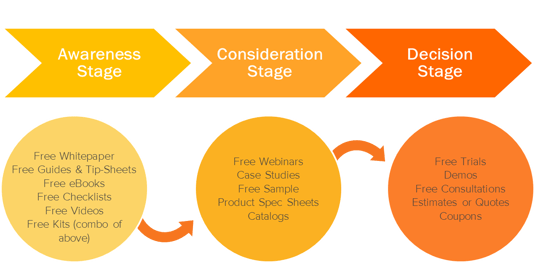
Developing new customer segments that may be a match for your products requires additional considerations that companies previously did not have to consider. Consider what Patagonia has built into its brand culture with its effort to save the Jumbo Park Glacier.
In this article, I identify a population that may provide a new opportunity for sales and social purpose. First, a company must figure out if the opportunity is feasible, and they can do that with developing a system to accommodate its goals. System development starts with pinpointing each organization's best opportunities (check out the Fundamentals of Digital Marketing for the Outdoor Industry).
. A thorough examination of the existing baseline, followed by a detailed and prioritized plan of attack. The system works.
How Companies Can Profit from Solving Social Problems
The outdoor industry has been creating programs to serve specific underserved populations for years. Individual companies have launched their own outdoor industry marketing efforts while most have joined with trade and service organizations. Research shows that potential customers want to know a company has a purpose to shop it. What was once fashionable is now a fundamental necessity in digital marketing for outdoor recreation industry. Modern consumer affinity for a company and its brand is often fueled by their desire to improve the lives of those in need, those less fortunate and society in general (81% of millennials even expect their favorite companies to make public declarations of their corporate citizenship).
Is there a large, overlooked community that needs information about our products and can reduce the cost of medical care for millions?
As the outdoor industry looks to continue its growth while advancing its community mission, purpose, and service, there may be a huge population that it has overlooked. Not only does this population need help in learning about solutions to its problems there are products and services the industry offers that offer viable alternative solutions. Moreover, it is costing this country to the tune of $90 billion a year is spent on mostly ineffective solutions.
What is it? Chronic lower back pain.
According to research, 23% of adult Americans have lower back pain. It is one of the top reasons people go to doctors. That's over 44.6 million people. (This estimate is based on 2010 U.S. CENSUS data.)
Many of the most popular treatments on offer from doctors for chronic nonspecific low back pain — bed rest, spinal surgery, opioid painkillers, steroid injections — have been proven ineffective in the majority of cases, and sometimes downright harmful.
Consider opioids. In 2017, more than 30,000 Americans will die from opioid overdoses. Opioid prescribing is common among people with back pain, with almost 20 percent receiving long-term opioid prescriptions.
“Our best understanding of low back pain is that it is a complex, biopsychosocial condition — meaning that biological aspects like structural or anatomical causes play some role but psychological and social factors also play a big role," Roger Chou, a back pain expert, and professor at Oregon Health and Science University, summarized.
So why do you ask should companies in the outdoor industry consider this outdoor industry marketing segment?
Our industry has viable solutions that we are not effectively educating those suffering.
Researchers in this 2016 review of the research on exercise for chronic nonspecific low back pain summarized exercise’s range of benefits, including these pretty amazing findings:
- “Aerobic exercise for 20 min on a cycle ergometer at 70% peak oxygen uptake reduced the pain perception for more than 30 min for patients with [chronic low back pain].”
- “Improving the flexibility of the lumbar spine and hamstrings can significantly reduce [chronic low back pain] by 18.5%–58%.”
- “Core stabilization programs have been shown to significantly reduce [chronic low back pain] by 39%–76.8%, and a muscular strength program significantly reduced [back pain] by 61.6%.”
In terms of our industry, these equate to basic forms of walking, yoga, hiking, tai-chi, water aerobics, simple stretching, bike riding, etc.
Those researchers suggested that a combination of exercises — strength training, aerobic exercise, flexibility training — may be most helpful to patients, and that there seemed to be no clear winners among the different approaches but that each had its own benefits.
Dr. Marc Tinsley of the Center for Disease Control and Prevention, says maybe it's time to "think outside the barbell." Gyms are not for everyone. “One of the main problems is that people associate exercise with a gym or equipment. Fitness isn’t about sweat, six-packs, and sex appeal; it’s about having enough energy to do your activities of daily living safely and effectively.” The solution is to get outdoors and get more creative with your physical fitness."
Many adults suffer from what Richard Louv has termed “Nature Deficit Disorder.” In today’s modern, technology-driven world, people spend more and more time indoors – in front of screens. This is one of the factors contributing to the current obesity epidemic in America.
How Inbound Marketing Can Help Uncover Solutions to Societies Problems
What is inbound marketing? It's an approach characterized by “attracting” buyers, instead of following a dated playbook of interrupting your prospective customers with irrelevant messages and advertising. The inbound sales methodology matches how people buy.
"Inbound marketing delivers 54% more leads into the marketing funnel than traditional outbound leads" - HubSpot
Let’s apply the fundamentals of inbound marketing and the buyer's journey to the answer.

- Awareness - Person suffering from chronic low back pain is experiencing and expressing symptoms of a problem. They are doing research to more clearly understand, frame and narrow in on their problem.
- Consideration - Person suffering from chronic low back pain has now clearly defined their problem, given a name to their condition, and is researching all of the available approaches or methods to solving their problem.
- Decision - Person has now decided on their solution and is compiling a list of available companies and products from which to make a final decision.

With 44.6 million Americans identifying they have this problem, does your company have products from which you could provide needed information while nurturing them along the sales funnel? Besides those directly suffering you have individuals in segments who care about those individuals who have this problem, provide services to them and spend money on them.
People don't want to be sold on a product, they want to buy. They don't need to go through their mail or listen to radio ads to find the best offers anymore. They have a more convenient and useful way to find information: the Internet. Rapid advances in technology have allowed people to entertain and inform themselves virtually anywhere and anytime they have a good internet connection. Consider:
- How many outdoor industry companies provide information on how to get rid of back pain? How many are providing information about exercise to assist in ridding individuals of back pain or the benefits of outdoor recreation?
- Are they providing information that can help people discover their products can be part of a solution to back pain that should be included as part of their content creation strategy?
- Have they thought about how to target the individuals searching for such information using an appropriate SEO strategy with long tail keywords (e.g. benefits of outdoor recreation for working adults with chronic low back pain)?
- Using conversational keywords and other SEO optimization strategies knowing there are millions searching for information, solutions, and products to help them?
How many companies have considered reaching out to recognized medical providers, research groups, public and private hospitals, education groups to team up in creating partnerships and back-linking opportunities to additional research to create authority and search rank?
"89% of US internet users search online before they make a purchase, even when the purchase is made at a local business." - HubSpot
- Why should Internet users consider your products as a means to assist in executing on this possible solution?
- What types of products do they provide that can make this option more feasible and enjoyable?
- What memories can your product help create in finding and executing a solution?
Let's go one step deeper in how this might be executed for your company by considering new ways to use the ever expanding set of digital marketing tools. Here are some trends to consider.
To not be at the mercy of only Google and Facebook, you should have diversified your mediums to reach your customers and prospects. Continue to develop your email communication, give your customers the option to enable browser notifications, and see if it makes sense to dive into SMS or text message marketing.
Get ahead of your competition by embracing the movement to one-to-one marketing. How can you tailor your messaging for very specific segments your overall marketing plan so that every single customer thinks you are only talking to them? Facebook posts can bring your customers to your e-commerce store through the very specific segmenting of their audience. Once they are at your store, you can then tailor their experience. The software technology is already here with offerings like HubSpot, Marketo and Pardot then integrate with something like Clearbit, you can get done to individual customer experience tailoring.
The Emerging Role of Bots
A bot is software that is designed to automate the kinds of tasks you would usually do on your own, like making a dinner reservation, adding an appointment to your calendar or fetching and displaying information. The increasingly common form of bots, chatbots, simulate conversation. They often live inside messaging apps — or are at least designed to look that way — and it should feel like you’re chatting back and forth as you would with a human.
Just recently marketing has begun to utilize bots to improve the experience of customers and free up human capital to more high-value tasks. A bot is something someone programmed an algorithm so that a bot can respond to general questions. Bots are now being able to provide service support like answering FAQ's, instructions for assembly and SEO tasks. AI is already in use in a myriad of marketing use cases. From content curation to SEO, to email marketing, different tools are already being used by brands - not only to make human marketers' lives easier but to make them better at their jobs.
Bots can serve customers and prospects on an individual basis. It takes information and keeps putting it back into the system to learn. People can use bots at times to collect information to direct them to the right human to talk to, and the data that bots collect can be very valuable at times.
The bar to creating content has been raised. Creating a video, podcasts, and blogs that are richer and take more time to develop. If you really want to differentiate you are going to have to put in the time to create it.
If you're concerned with risk, be smart, this is not an issue of risk aversion but one of proactively managing risk if there is any. In this case, you may want to consider talking with someone like Jim Moss, “the outdoor industry's favorite lawyer" according to Outdoor Retailer magazine (pg. 59).
There are several questions for thought leaders in the industry to consider:
- Is this discussion worth pursuing inside my company or within the broader industry?
- What other questions need to be asked?
- Are there institutions outside the industry that should be engaged?
Individual companies in the outdoor industry and collectively need to continue to foster "big idea" thinking and discussions. That's one of the purposes of this article. Its also to apply the inbound method of marketing as a tool for addressing this opportunity. If not, then we keep moving forward with other ideas on how the outdoor industry can serve and still be profitable companies.


